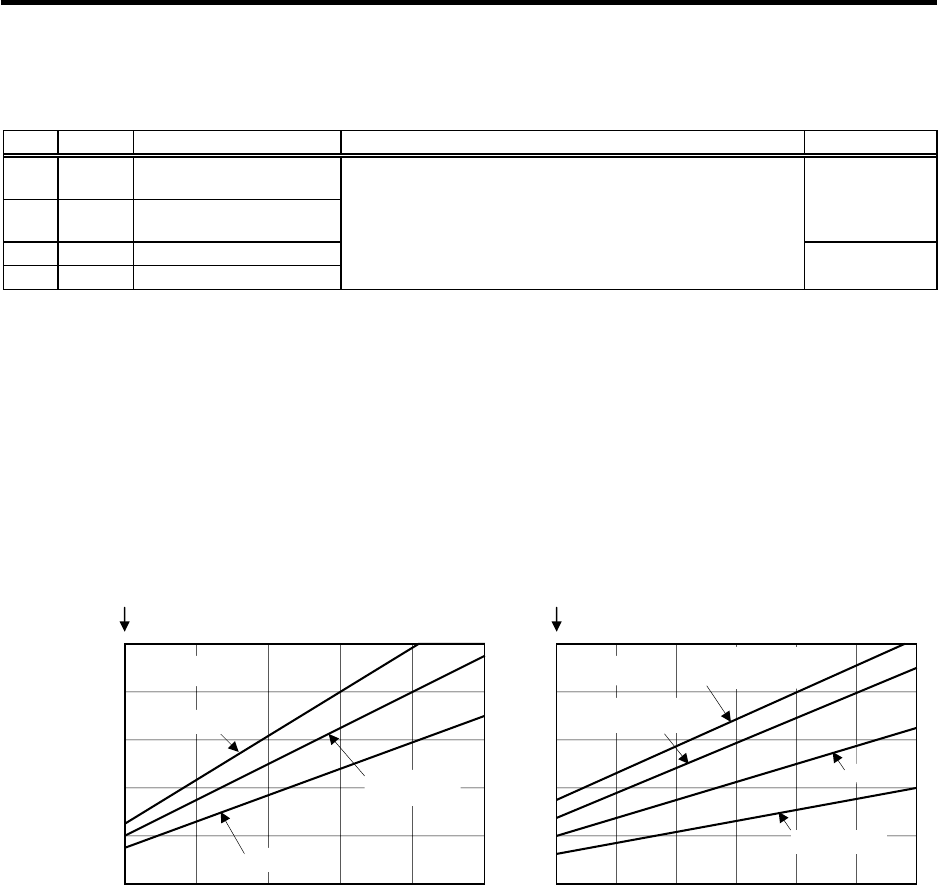
4. Servo Adjustment
4 - 4
4-2 Gain adjustment
4-2-1 Current loop gain
No. Abbrev. Parameter name Explanation Setting range
SV009 IQA Current loop q axis lead
compensation
SV010 IDA Current loop d axis lead
compensation
1 to 20480
SV011 IQG Current loop q axis gain
SV012 IDG Current loop d axis gain
Set the gain of current loop.
As this setting is determined by the motor’s electrical
characteristics, the setting is fixed for each type of motor.
Set the standard values for all the parameters depending on
each motor type.
1 to 8192
4-2-2 Speed loop gain
(1) Setting the speed loop gain
The speed loop gain 1 (SV005: VGN1) is an important parameter for determining the
responsiveness of the servo control. During servo adjustment, the highest extent that this value
can be set to becomes important. The setting value has a large influence on the machine cutting
precision and cycle time.
[1] Refer to the following table and set the standard VGN1 according to the size of the entire load
inertia (motor and machine load inertia).
[2] If the standard speed gain setting value is exceeded, the current command fluctuation will
increase even if the speed feedback fluctuates by one pulse. This can cause the machine to
vibrate easily, so set a lower value to increase the machine stability.
<When machine resonance does not occur at the standard VGN1>
Set the standard VGN1. Use the standard value if no problem (such as machine resonance)
occurs. If sufficient cutting precision cannot be obtained at the standard VGN1, VGN1 can be
raised above the standard value as long as a 70 percent margin in respect to the machine
resonance occurrence limit is maintained. The cutting accuracy can also be improved by adjusting
with the disturbance observer.
<When machine resonance occurs at the standard VGN1>
Machine resonance is occurring if the shaft makes abnormal sounds when operating or stopping,
and a fine vibration can be felt when the machine is touched while stopped. Machine resonance
occurs because the servo control responsiveness includes the machine resonance points. (Speed
control resonance points occur, for example, at parts close to the motor such as ball screws.)
Machine resonance can be suppressed by lowering VGN1 and the servo control responsiveness,
but the cutting precision and cycle time are sacrificed. Thus, set a vibration suppression filter and
suppress the machine resonance (Refer to section "4-3-2 Vibration suppression measures"), and
set a value as close as possible to the standard VGN1. If the machine resonance cannot be
sufficiently eliminated even by using a vibration suppression filter, then lower the VGN1.
Load inertia scale (%)
Isolated motor
100
200
0
500
400
300
100 200 400 600300 500
Load inertia scale (%)
Standard
VGN1
Isolated motor
100
200
0
500
400
300
100
200 400 600300 500
HC52~HC152
HC202~HC902
HC53~HC203
<HC>
HC353~HC703
HA40N
HA80N/100N/900N
HA43N~HA103N
<HAN>
HA053~HA33N
HA200N~HA700N
HA203N~HA703N
High-gain specifications High-gain specifications


















